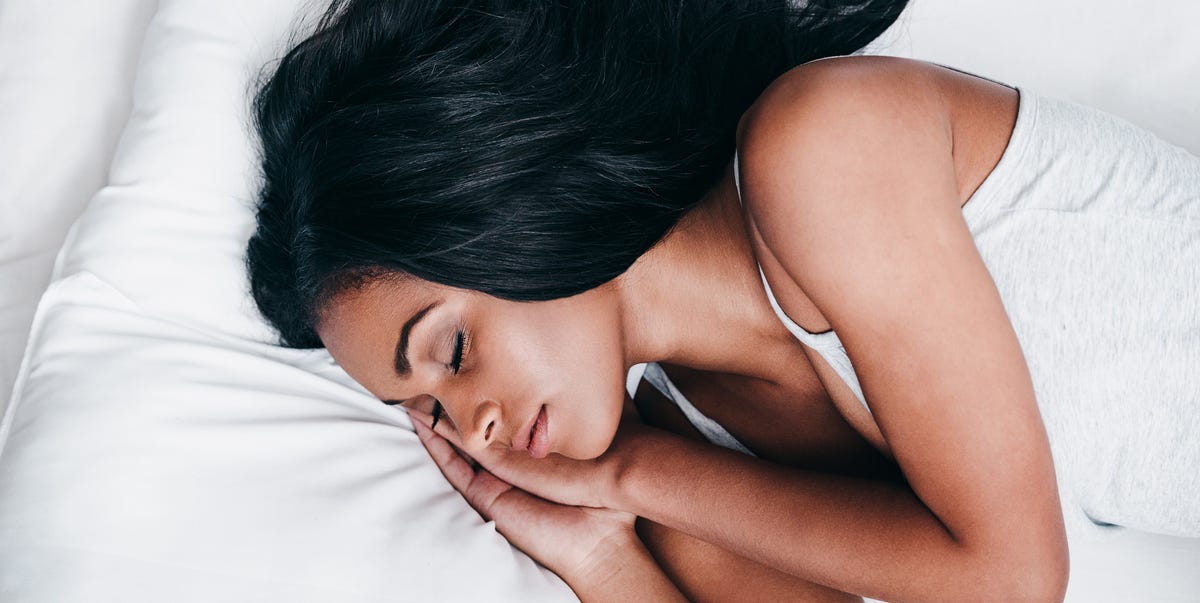
I have a lot of sleep problems. Getting up every morning is a struggle punctuated by multiple alarms. Sleep paralysis—when I tell my arm to move and it won't—is pretty common for me. When I do wake up, my body is sore from sleeping in awkward positions, like on my stomach or with my body crushing a limb. And when I'm ready to do it all over again at night, I lie awake for hours, reviewing the day, worrying about tomorrow, calculating how many hours of sleep I have left.
In the spirit of the new year, I decided to end my bad sleeping habits once and for all. I paid a visit to NYC Sleep Doctor and sleep psychologist Dr. Janet Kennedy and aired my sleep grievances. Little did I know, I was approaching sleep the completely wrong way. "You wanna treat [sleep] like a feral cat," Kennedy told me at her cozy Manhattan office. "You have to coax it by not paying too much attention to it. The more you try to pursue it, the more it's gonna run away."
Let sleep come to me. Not easy for a problematic sleeper, but I found myself dozing off faster and waking up easier after a week of following Kennedy's small tweaks. Ahead, the best tips for breaking bad sleeping habits.
Get a good pillow.
"Sleep position is secondary," says Kennedy. "I think you should take a look at your pillow and make sure it's supporting you properly. If you like sleeping on your stomach, you have a thinner pillow. If you like sleeping on side, you have a thicker pillow, your back is in between. You don't have to spend a bajillion dollars to get a decent one, but it should be the right size and firmness for how you sleep."
Don't go to bed too early.
"It actually pushes your bed time much later because you're putting pressure on yourself to get a certain amount of sleep in a certain amount of time, and then when you don't fall asleep, you start to get anxious, which then releases adrenalin in your body," Kennedy explains. "When we're anxious, our body goes into fight or flight, even when we're anxious about wanting to be asleep. That fight or flight response delays your sleep onset even more."
Create slept debt to reset.
"Typically, what we would do in a CBT (cognitive behavioral therapy) for insomnia, would be to make your bed time much later, to try to figure out what your body wants to do, and then by doing that, constricting the amount of time you have to sleep," says Kennedy. 'If I were to say, 'All right, you can't go to bed, you can't even turn your lights out until 1:00 a.m, but you have to get up at 7:30 a.m.' If that's not enough sleep for you, then you'll start to accumulate enough of a sleep debt that if we then widen that window, you'll be able to sleep during that time."
If you can't sleep, read.
"Read, because you have time to read. Instead of turning out your lights at midnight let's say, if you just started reading in bed, eventually you would be so sleepy, you couldn't stay awake," Kennedy tells me. "Part of the reason is that reading gives your thoughts somewhere to go. It's taking them away from the anxiety of, 'I hope I can sleep. If I fall asleep now, I'll have six good hours.' Or, 'What's gonna happen tomorrow,' whatever. If you're reading, your mind doesn't have a chance to do that. And then your body can take over with it's natural fatigue when it's ready.
Stay off your phone.
"The backlighting [of your phone] is blue light, and blue light shuts off your body's melatonin, the pathway from your retina to this little switch that says it's daytime or it's nighttime," Kennedy explains. "It's extremely direct, and so you're basically shining a light onto that light switch that's saying, 'Oh wait, it's daytime, don't give me melatonin.' The other reason you don't wanna be on your phone is because it's too easy to click over and go, 'Let me just check my email one last time,' or, 'Let me see what's going on online.'"
Watch your weekends.
"When you sleep late on weekends, you distort your schedule, and then it's hard to get back on track," Kennedy says. "Don't sleep so late, particularly on Sundays. If you sleep late on Saturday and go out late on Saturday night, as long as you get up on Sunday morning, you're not gonna feel awesome on Sunday, but you'll do better on Sunday night."
Comments
Post a Comment